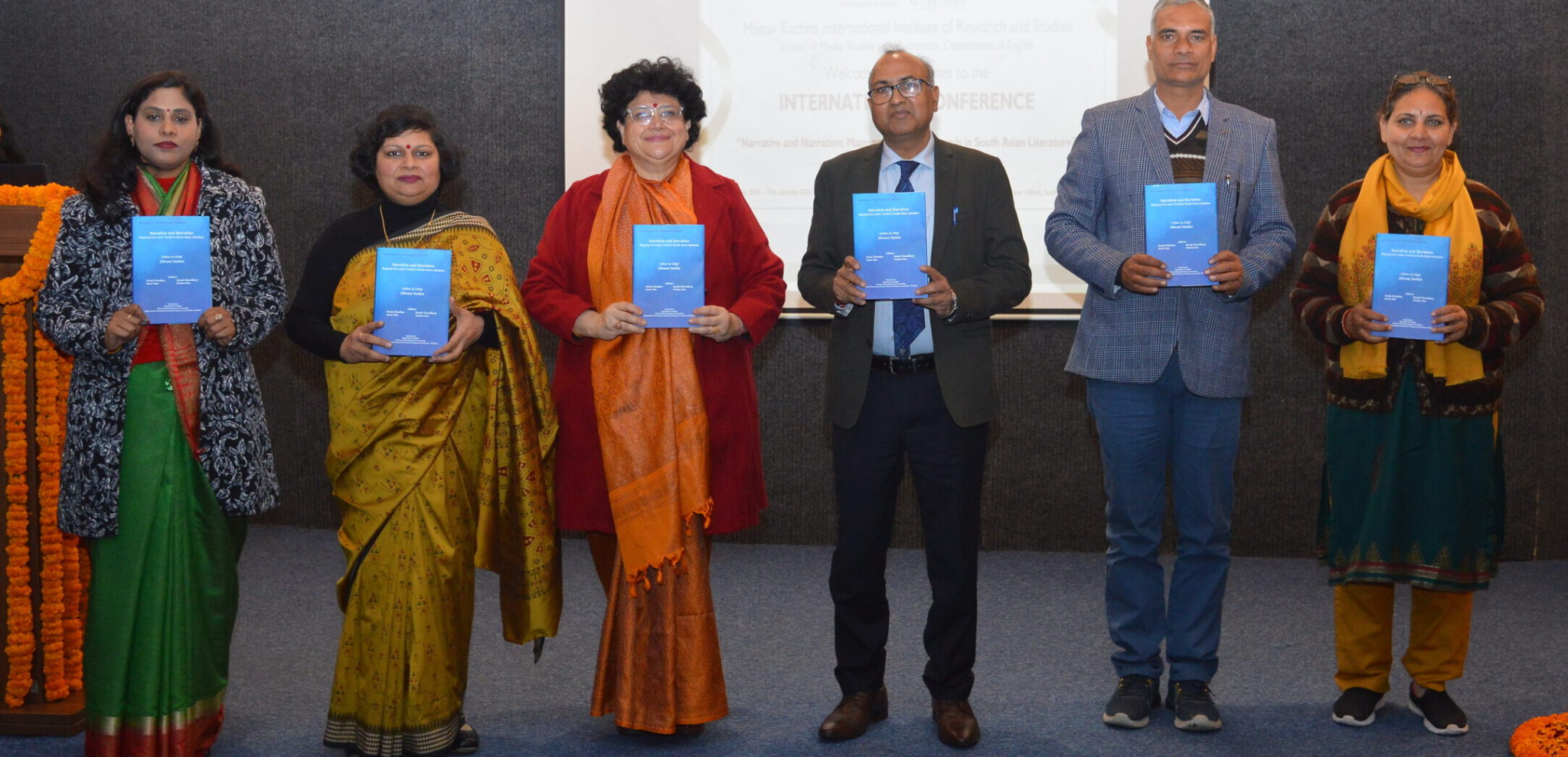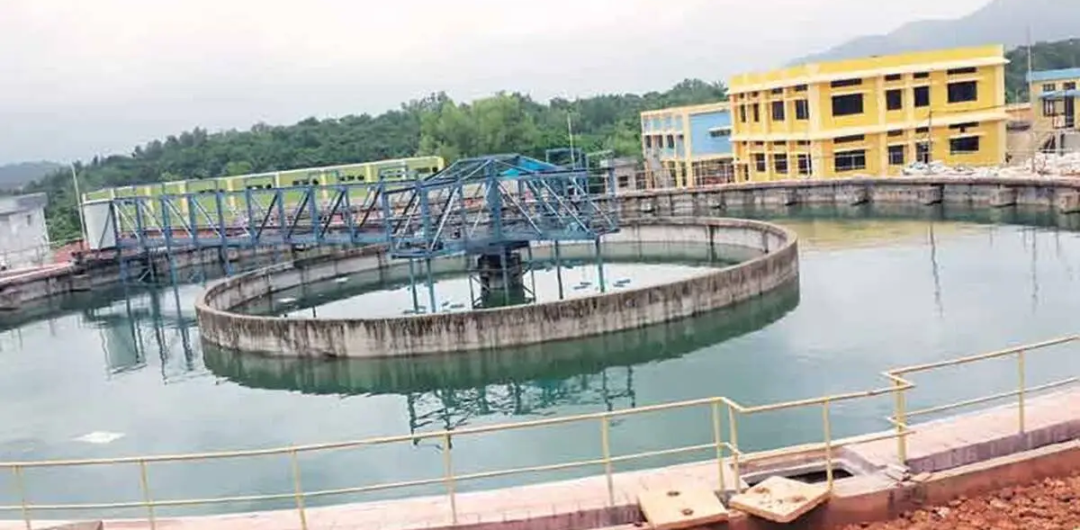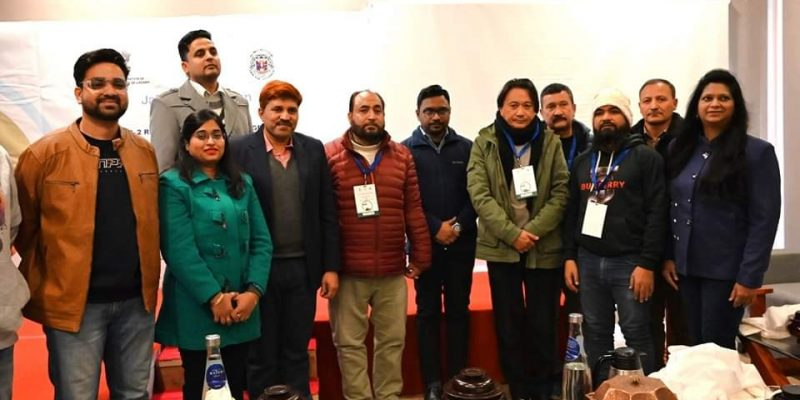The Union Minister for Jal Shakti, Shri Gajendra Singh Shekhawat today inaugurated 14 MLD Sewage Treatment Plant (STP) and 2.4 km long Interception & Diversion (I&D) Network in Baghpat, Uttar Pradesh. The centerpiece of the project is the establishment of a cutting-edge Sewage Treatment Plant with a capacity of 14 Million Liters Per Day (MLD) under DBOT mode with 100% central funding under the Namami Gange Programme. The estimated cost of the project is Rs. 77.36 crores. The event was graced by Shri Swatantra Dev Singh, Jal Shakti Minister of Uttar Pradesh; Shri Satya Pal Singh, Member of Parliament from Baghpat; Shri Jaswant Singh Saini Minister of State for Industrial Development and Parliamentary Affairs; Shri Yogesh Dhama MLA, Baghpat and Shri G. Asok Kumar, Director-General, NMCG.
Union Minister for Jal Shakti, Shri Gajendra Singh Shekhawat, addressing the August gathering asserted that significant strides have been made towards fulfilling Prime Minister, Shri Narendra Modi’s commitment to purify the waters of Ganga and Yamuna. He emphasized on the vital role of water as the foundation of life, underscoring that life itself is inconceivable without it. Lauding the leadership of Prime Minister, Shri Narendra Modi, the Union Minister highlighted the comprehensive conservation and promotion work being carried out from Himachal to Bengal through the Namami Gange Mission. Reflecting on a decade of NMCG’s endeavors, Shri Shekhawat expressed pride in witnessing successful river conservation efforts. Notably, the rejuvenation has led to the return of aquatic life in the Ganga, with increased numbers of fishes, turtles, and dolphins, affirming the sustained vitality of the river.
Shri Shekhawat took pride in Namami Gange being recognized as one of the top 10 World Restoration Flagships to revive the natural world at the United Nations Biodiversity Conference in Montreal, Canada. He emphasized that the Ganga and Yamuna are not only symbols of faith but also essential sources of sustenance and livelihood. The Ganga River Basin, one of the country’s largest, houses 43% of the total population. Shri Shekhawat expressed concern for the endangered existence of rivers due to changing circumstances and urbanization. In response, he highlighted the crucial efforts that are underway, led by Prime Minister Shri Narendra Modi, as vital initiatives in the face of these challenges. He said that in a remarkable achievement, the waters of the Ganga have now reached the standard of potability. Discussing the ongoing challenges regarding the pollution of the Yamuna, he noted that Asia’s largest Sewage Treatment Plant (STP) has been successfully established in Okhla, boasting an impressive capacity of 564 MLD. Shri Shekhawat concluded by underscoring the commitment to combat Yamuna’s pollution with a firm pledge to ensure 100 percent cleanliness in the Yamuna water of Delhi by the year’s end.
DG, NMCG, Shri G. Asok Kumar addressing the gathering highlighted that the newly inaugurated 14 MLD Sewage Treatment Plant (STP) in Baghpat is designed to harness sewage effluent from 4 nalas through a 2.345 km interception line. He mentioned that this intervention aims to redirect household wastewater away from open drains along the roadside, making the discharge into nalas more efficient. Shri Kumar also emphasized the unwavering commitment of NMCG in the extensive cleaning and rejuvenation efforts focused on the tributaries of the Ganga.
The project encompasses the strategic interception of four major Nalas in the region, effectively curtailing the discharge of sewage into the sacred waters of the Yamuna River. An Intercepting Sewer Line, utilizing Reinforced Cement Concrete (RCC) NP3 pipes spanning 2.345 kilometers, is installed to ensure efficient sewage interception. The deployment of Ductile Iron (DI) K-9 pipes covering a distance of 600 meters facilitates seamless vertical conveyance through the Rising Main. Additionally, the installation of one Master Pumping Station (MPS) regulates the efficient flow of sewage within the system. Complementing these advancements, the comprehensive initiative includes a robust Operation & Maintenance plan, committed to ensuring the facility’s optimal functionality for the next 15 years.
The Baghpat STP, one of the key components of the Government of India’s efforts to address Yamuna’s pollution concerns, embodies a commitment to environmental stewardship. The Yamuna Action Plan (YAP I, II & III), initiated in 1993, has seen the government providing financial assistance to states along the Yamuna, including Haryana, Delhi, and Uttar Pradesh, to combat the rising pollution levels. Nestled within this broader context, the Baghpat STP stands as a beacon of progress, addressing the pressing need for enhanced sewage treatment and sustainable water management. The largest tributary of the Ganga River, the Yamuna flows through Uttarakhand, Himachal Pradesh, Haryana, Delhi, and Uttar Pradesh before merging into the Ganga at Prayagraj. The Government of India, in collaboration with NMCG, has recently approved 34 projects, allocating Rs. 5834.71 crore to create 2110.25 MLD STP capacity. These projects are strategically distributed across Himachal Pradesh (01), Haryana (02), Delhi (11), and Uttar Pradesh (20), under the Namami Gange program, aiming to mitigate pollution in the Yamuna and Hindon Rivers. Notably, 15 out of these 34 projects have already been completed, including one in Paonta Sahib, Himachal Pradesh, two in Sonipat and Panipat, Haryana, six in Vrindavan, Etawah, Firozabad, Baghpat, and Mathura (involving both STP & CETP) in Uttar Pradesh, and six in Delhi.





